Gas Stoves – Everything You Need To Know
What Is A Gas Stove?
A gas stove is a type of stove that uses combustible gas like natural gas, propane, butane, LPG, etc., as fuel. These are easily adjustable and provide equal heating throughout the cookware’s surface. Gas stoves heat up much faster than the alternatives like induction cooktops or electric cookers, working well with any type of cookware.
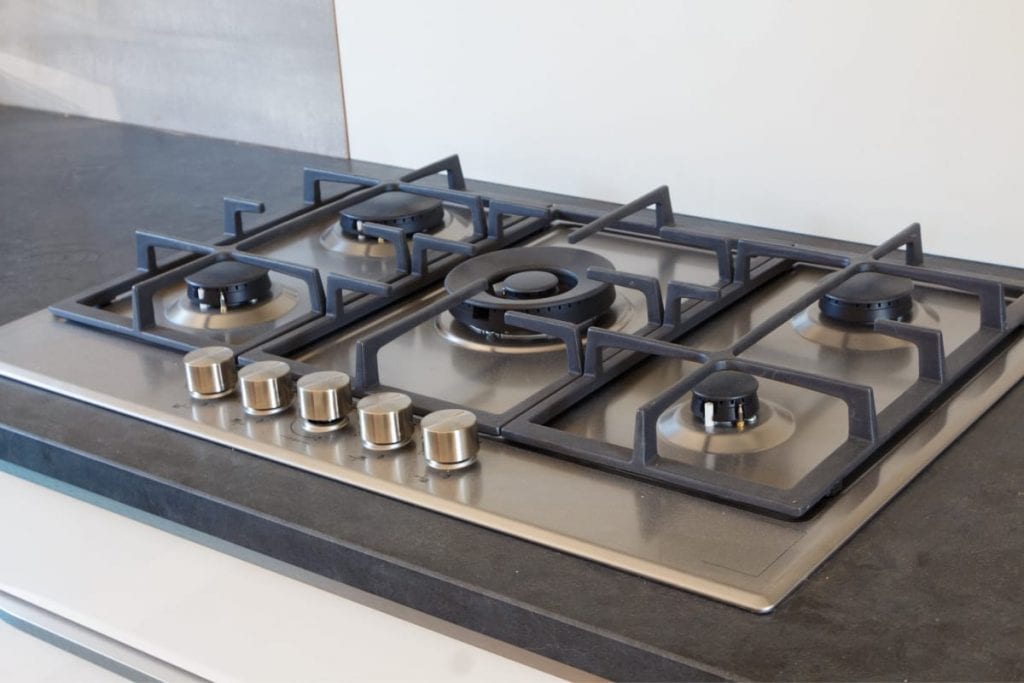
Before the advent of gas stoves, people depended on fuels like coal or wood for cooking. These were not convenient and consumed a lot of time. Gas stoves did away with the daily hassle of solid fuel and gradually became a common addition across Indian kitchens.
Nowadays, a variety of options for gas stoves are available in the market, which can handle smaller or larger cooking quantities with ease. But the fundamental features of our old kitchen companion remain the same. In this article, we will discuss the nitty-gritty as well as the perks and drawbacks of our trusted gas stoves.
Parts Of A Gas Stove
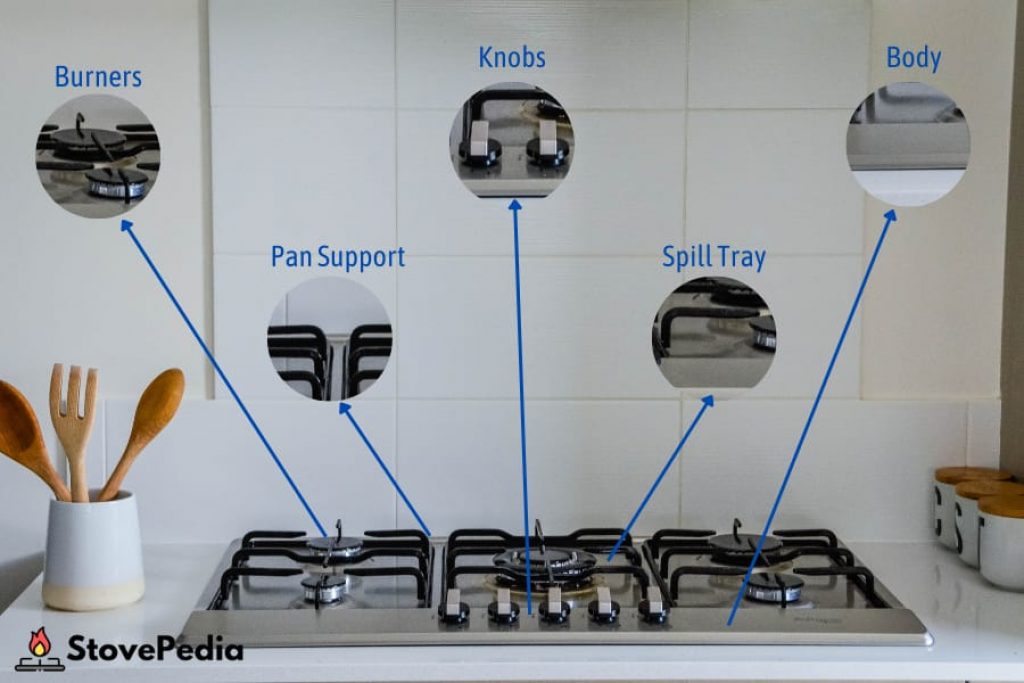
Burner
The burner in a gas stove is basically a hollow metal disk-like structure mainly made of brass. The burners have very small holes punctured along the perimeter. The fuel gas mixed with oxygen comes through the pipe and flows through the burner holes in the burner. Then the stove lights up by touching a flame to a side of the burner. The temperature and color of the flame depend on the amount of gas flowing through the burner holes.
There are several materials like brass, forged brass and aluminum to manufacture the burners of a gas stove. By comparing different burner materials, you will understand their advantages and disadvantages.
Nozzle
The nozzle is an essential part of the gas stove mechanism as it controls the direction and intensity of the flow of the fuel. It is a cylindrical sprout-like part attached to the end of the gas pipe. The nozzle leads the gas to the burner, mixing with air, making the fuel combustible.
Control Knob
The control knob lets the user control the gas flow to the burner. Each burner has its own knob located mostly on the panel perpendicular to the stovetop. Turning the knob opens the valve and fuel flow in the burner. If the gas stove is electronic, turning it till you hear the clicking sound ignites the flame while standing pilot ignition requires an outside flame source.
Pan Support
An essential accessory in gas stoves, pan supports or grates are mostly made of cast iron or steel. One for each burner, these are placed on top of the gas hob. The primary function of the pan supports is to hold the cookware over the flames. These are detachable and hence can be cleaned easily.
Spill Tray
Spill tray or drip pans fit underneath the burners and are mostly detachable. As evident in the name, spill trays catch boil-overs and spillage. It also reflects heat back to the pots and pans. As spill trays are detachable, they are also relatively easy to wash and clean.
Stove Body
The body of the gas stove comes in two different varieties- the classic stainless steel body and the modern tempered glass materials. While gas stoves with stainless steel bodies prove to be sturdier and easier to clean, glass top gas stoves add a modern look to your kitchen. To know which is better for you, compare stainless steel with glass top stove and choose a suitable one.
Gas Pipe
Last but not least, the gas pipe is, in its essence, the most indispensable part of a gas stove system. The gas pipe carries the gas to the stove burner. The most common materials used to manufacture gas pipes are steel, high-density polyethylene or HDPE, black iron, flexible stainless steel, polyvinyl chloride or PVC, and copper.
Users should be cautious to check the gas pipes of stoves from time to time as any leakage can cause severe accidents. They should also take proper precautions to connect and remove the gas pipe from stove while doing it by themselves.
Is A Gas Stove Safe To Use?
You may use your gas stove on a daily basis, but how many times have you tried to learn how it actually works? Although gas stoves are fairly safe, they use combustible fuel. Hence, gas stoves do involve certain risks.
Lighting the burner can also be unnerving for amateurs and first-timers alike. Knowing how your gas stove works would actually help you to avoid accidents in the kitchen. Plus, it’s always fun to learn new things, isn’t it?
How Does A Gas Stove Work?
The working of gas stoves depend on the variants and technologies involved. The modern gas stoves are available in two varieties when it comes to ignition- standing pilot and electronic ignition.
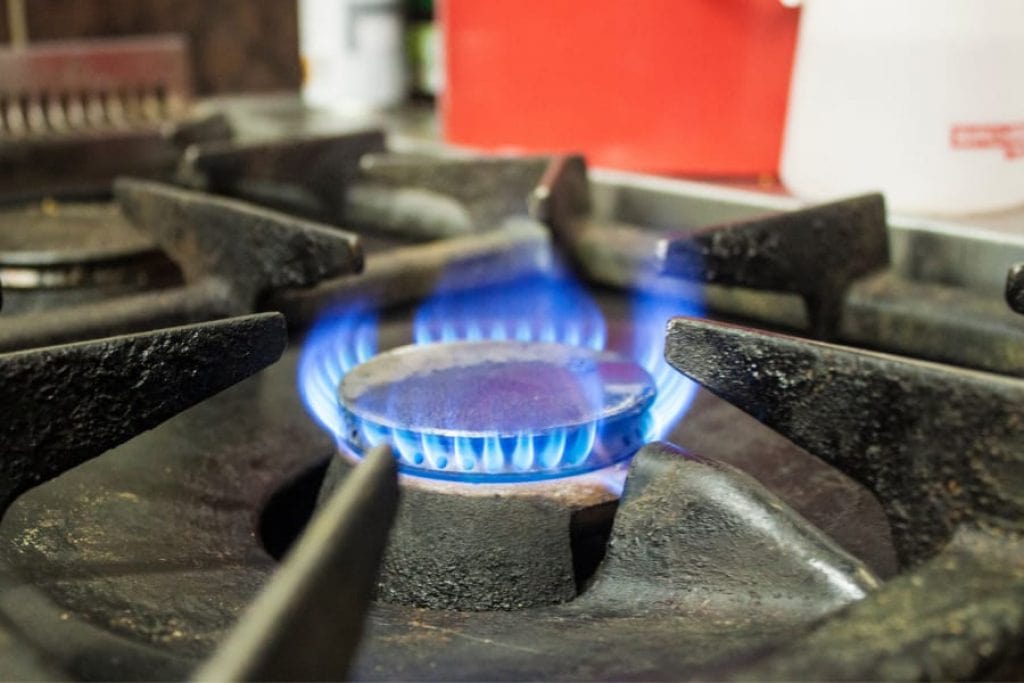
Standing Pilot Ignition
The gas stoves that work on this mechanism, roar to life with a turn of a knob. Such stoves use a pilot light (gas flame that continuously burns) between the front and the back burner. A gas stove burner essentially has a burner assembly attached to a gas valve. This valve connects the system to the main gas line.
Now, when you turn the knob, the valve opens. This allows the gas to flow through the venturi tube, a pipe wide at the ends and narrow in the middle. Due to the narrow area of the venturi tube, the pressure of the gas flow increases.
There is a small air hole where the venturi tube widens again. The function of this air hole is to suck in the oxygen when gas moves towards the wider section and releases the pressure.
After the oxygen gets mixed with the gas and turns into a combustible fuel, it flows into the burner. Gas stove burners are hollow on the inside and are made of metal with small holes throughout the perimeter. The fuel flows through these holes.
When you put a flame source on one side of the burner, it lights the oxygen gas mixture. You can adjust the flame by turning the knobs up and down.
Electronic Ignition
While the mechanisms are the same, electricity sparks the burners in gas stoves with electronic ignition. You just turn the knob until it clicks and your burners light up. In electronic ignition, the knob not only controls the gas flow but also sends a tiny electric spark to turn the flame on.
Gas stoves have proven to be pretty more energy-efficient than electric cookers but less efficient than induction stoves. According to research, fuel reaches the gas stove 3 times faster than the amount of time electricity takes for electronic cookers.
Gas stoves also heat up quicker than their counterparts. Hence they take less time to cook and save energy. When it comes to cost-efficiency, your gas stove can actually save you more money in the long run than a fancy electronic stove.
Number Of Burners Of Gas Stoves
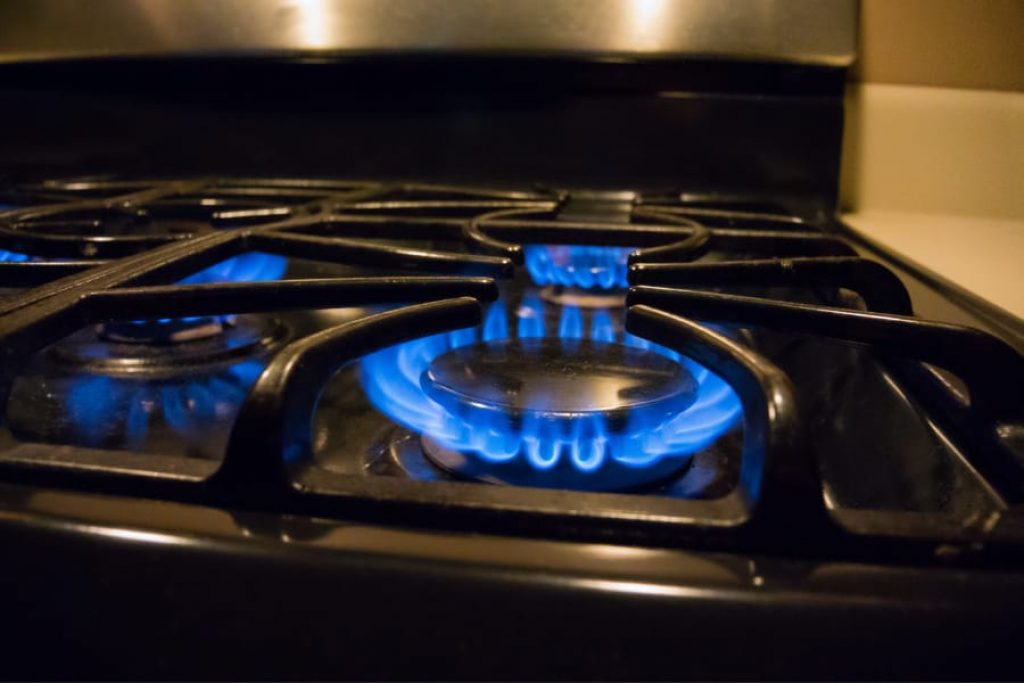
One Burner Gas Stove
Regular gas stoves can be too bulky for small kitchens. On the other hand, 1 burner gas stoves are compact and lighter and save a lot of space. These come in handy, especially if you live alone in a small space that does not have a cooking surface.
A single burner gas stove can easily be placed on portable tables. One-burner stoves are small and perfect for small cooking needs, making them ideal for shops, offices, and hostels.
Two Burner Gas Stove
Most households of small families use 2 burner stoves as their primary cooking appliance. Available in both stainless steel body and glass top, these stoves can efficiently be used to cook a full course meal for 4 people.
Another advantage of 2 burner gas stoves is that they are compact enough for small to medium-sized kitchens of urban nuclear families. Modern designs are aesthetically pleasing and can suit well in modular kitchens.
Three Burner Gas Stove
Many households nowadays replace their old two burners with 3 burner gas stoves. The primary reason behind this is convenience. Even if you have a nuclear family, cooking an elaborate meal on a 2 burner gas stove can be time-consuming. Three burner gas stoves are ideal to avoid that problem.
Apart from the convenience, modern 3 burner stoves are aesthetically pleasing and good for Indian requirements. However, such a stove is not a practical choice if you don’t have a spacious kitchen above 200 sq. ft. or have a large family of more than four members.
Four Burner Gas Stove
Four burner stoves are ideal for busy individuals who need to cook several items at once or for a big family that requires a lot of cooking. Such burners provide bigger cooktop space, making it easier to place several pots and pans at once. You can quickly prepare multiple dishes simultaneously without making a massive mess on the cooking table.
Four burner gas stoves are also perfect for small restaurants as it speeds up different cooking processes at once and are also cost-effective. Such stoves also include auto-ignition, glass tops, control panels, alarms, etc.
Five Burner Gas Stove
Mostly used in commercial kitchens, five-burner gas stoves are naturally efficient for cooking for the crowd. Usually, the fifth burner is kind of an oval-shaped center burner.
The central burner typically is of elongated design, making it especially suitable for heating wide, long, and large cookware. A compatible griddle is included, which you can remove to accommodate cookware according to your need.
Fuels Used In Gas Stove
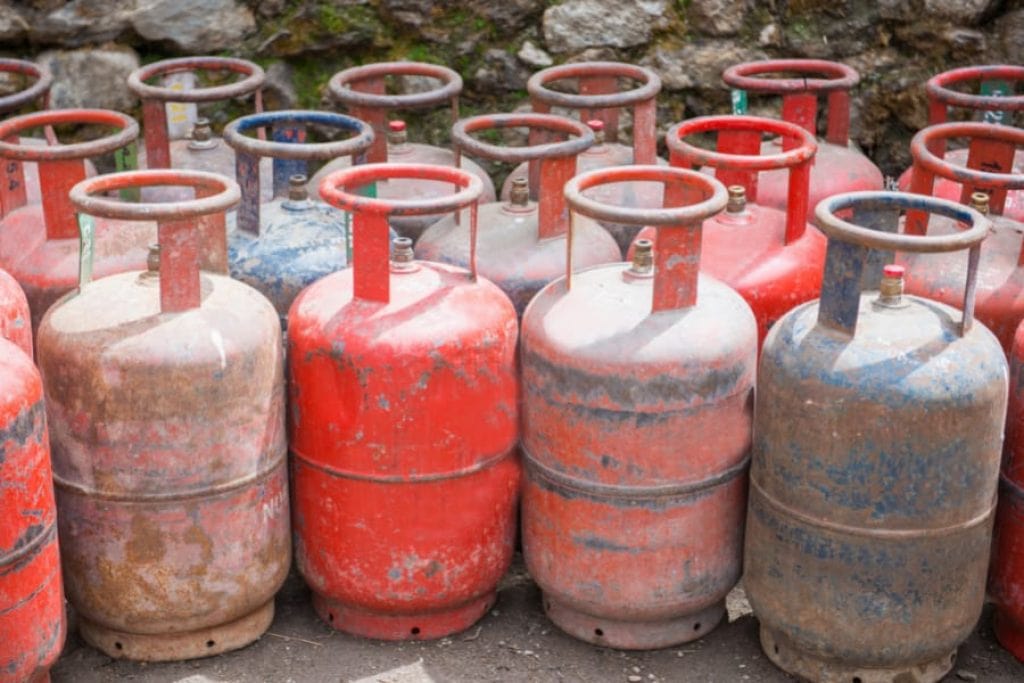
Natural Gas
Natural gas is one of the cleanest fossil fuels, suitable for both cooking and vehicular use. This naturally occurring fuel primarily consists of methane, with trace amounts of other hydrocarbons like propane and butane.
LPG
LPG or Liquefied Petroleum Gas is a liquid mixture fuel of highly flammable saturated hydrocarbons like butane, propane, propene, propylene, and butylene. Used for both industrial and domestic purposes, LPG is acquired during the petroleum refining process. As the boiling point of LPG is 0°C, it evaporates quickly at normal temperature.
Hence, LPG is usually available in pressurized steel vessels. The most common fuel used in gas stoves, liquefied petroleum gas, emits a much lower amount of Carbon Monoxide and reduces 90% of household air pollution compared to the alternatives. LPG stoves also have about 55% fuel efficiency.
The biggest advantage of LPG is its portability, as the gas contracts heavily when liquified. The final stages of LPG manufacture involve pressurizing the gas to compress and liquify it. In fact, 270 liters of the gas can be compressed into just one liter of liquid petroleum gas. This allows us to store and transport LPG in cylinders easily.
While LPG has no smell of its own, an external agent called Ethyl Mercaptan (Ethanethiol) is added to the mixture. So if there is any gas leakage, the distinct smell of the chemical alerts the user.
PNG
PNG or Piped Natural Gas is chemically different from LPG as PNG consists mainly of methane gas. Natural gas is lighter than air, with a flammability ratio of 5 to 15% by volume in air. Hence, there are lesser chances of spontaneous flammability in PNG gas stoves.
In various urban areas, gas distribution companies deliver PNG to homes and commercial establishments through a network of pipelines. Not only is PNG very safe to use, but it also comes with the convenience of an uninterrupted and hassle-free supply.
However, PNG yields lesser fuel efficiency compared to LPG gas stoves in most cases. Thus, compared to LPG, PNG yet isn’t widely used as domestic cooking gas in India.
CNG
As the term compressed natural gas (CNG) suggests, it’s a compressed form of natural gas. The gas is pressurized to less than 1% of its volume at standard atmospheric pressure for easy storage and portability. CNG is a popular fuel in India due to its eco-friendliness, high calorific value, and cost-effectiveness.
Propane And Butane
Though propane and butane are inflammable hydrocarbon gasses and share similarities in their chemical compositions, they’re suited to different purposes. For instance, propane’s low melting point makes it ideal for camping stoves, commercial applications, and central heating.
Butane, on the other hand, is a better choice for barbeques, boats, and caravans due to its high portability. LPG manufacturers blend propane and butane in the right proportions to strike a balance and ensure optimum performance as cooking fuel.
Propane and Butane can also be used as fuels in gas stoves, but a regular model has to be modified to accommodate these by-products of fossil fuel. However, it is widely used in portable gas stoves for camping.
A gas regulator and orifices will be required to use propane on a gas stove properly. Propane gas stove ranges can be installed in any home with access to a propane tank. Propane or butane is very fuel-efficient, making it cost-effective.
Types Of Ignition Systems On A Gas Stove
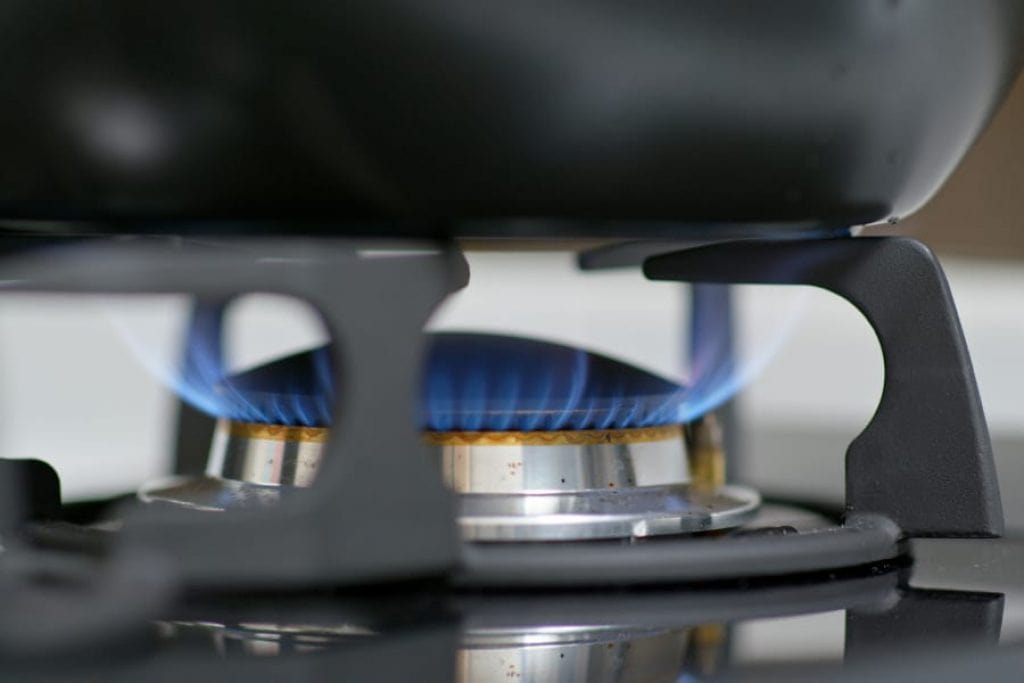
Manual Ignition
Gas stoves with a manual ignition system need a source of external spark like a matchstick or a lighter for the burner to be ignited. Ideal for daily home cooking, manual ignition stoves are low maintenance, less expensive, and do the job just as well as the alternatives.
However, not lighting the burner for a significant amount of time after turning on the gas flow can cause accidents. Hence manual ignition gas stoves pose a little more risk compared to auto ignition gas stoves.
Auto Ignition
Gas stoves with auto ignition do not need any external ignition source. With just a turn of the knob, an electrical spark is triggered that ignites the burner. The user can then adjust the flame to its desired intensity.
Auto ignition gas stoves are more convenient and safer to use for this very feature. Although more expensive, the newer designs come with alarm systems which are ideal for households with children and the elderly.
However, most auto ignition gas stoves are battery-operated systems, which requires to replace the batteries from time to time. Such stoves are also not as easy to maintain as manual ignition gas stoves.
Gas Stove Materials
While gas stoves are available in many designs, there are two types based on materials: stainless steel gas stoves and glass top gas stoves. Both kinds work on the exact mechanism but differ in a few ways.
Stainless Steel Gas Stove
More famous among the two, the stainless steel gas stoves are durable and lighter. Ranging from the humble 2 burners to a wide set of 4 burners, stainless steel gas cooktops are available in many options. These are also cheaper as well as sturdier than their counterparts.
Another advantage of getting a stainless steel gas stove is that they are easy to clean and maintain. However, such cooktops tend to lose their shine with time and are not the most aesthetic option. Stainless steel gas stoves mostly come with manual ignition.
Glass Top Gas Stove
Sleek and stylish, glass top gas stoves are a reasonably new addition to the market. Available in both manual and automatic ignition options, glass top gas stoves are usually more expensive and more prone to cracking or breaking than stainless steel cooktops.
While such gas stoves are aesthetically pleasing, cleaning them can be a little time-consuming compared to stainless steel gas stoves. Too much spillage of excessively hot and cold items can crack the surface. Cleaning underneath the burners also needs a little more care.
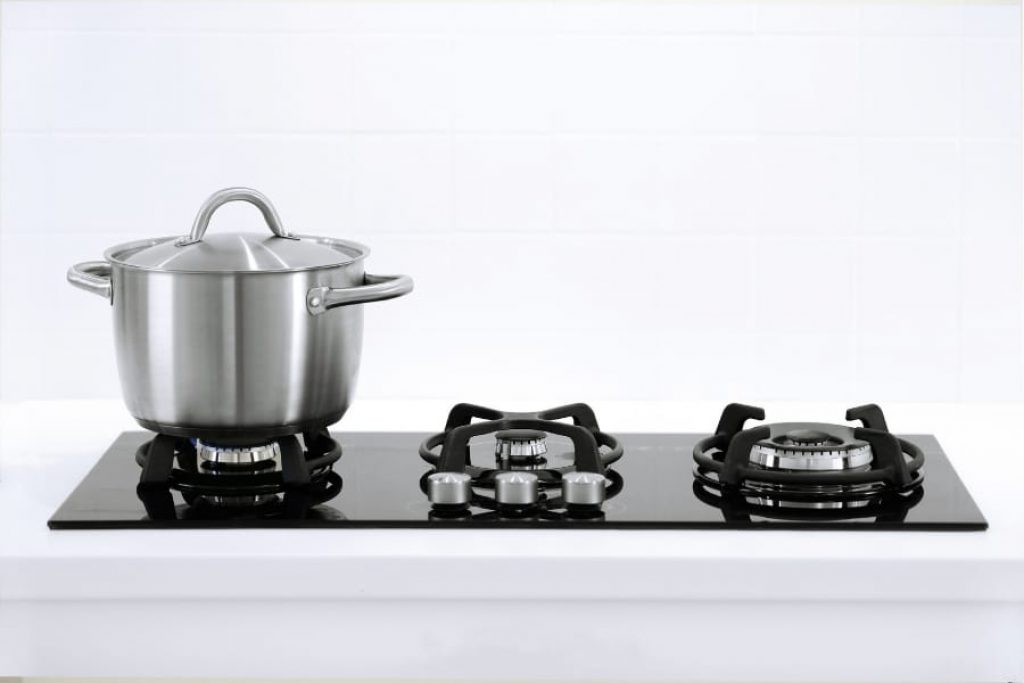
Gas Stove Brands
While there are hundreds of brands manufacturing gas stoves, you must select the best one to stay assured of its quality, cooking performance and fire safety. At present, brands like Prestige, Pigeon, Elica, Vidiem, Faber, Lifelong, Butterfly, Sunflame, Blowhot, and Surya Flame produce the best gas stoves in India.
Price Of Gas Stoves
Gas stoves are available in the price range of ₹600 to ₹70000, depending on the design, material, ignition system, and other features. While single burner gas stoves are the cheapest, four and five burner gas stoves are the costliest. If you prefer to install a modern-looking hob instead of a traditional gas stove, it will cost you extra bucks. For the best value-for-money, three burner gas stoves are ideal for most Indian kitchen requirements.
Advantages Of Gas Stove
1. Dependable temperature control
One of the reasons why gas stoves are immensely popular is because they are very efficient in reaching a certain temperature quickly and steadily maintaining the heat. As gas stoves use combustible fuel and deliver it directly to the burners, they heat the cookware faster. The control knobs on gas stoves can increase and decrease the amount of fuel flowing into the system.
Hence, the flame remains steady and can be conveniently and quickly controlled by operating the knob. Such easy heat control lets you use different cooking methods like boiling, frying, or sauteing more efficiently.
2. Works even in power cuts
Gas stoves do not need electricity like induction stoves do, making them useful even during a power outage. While electric ignition is available in modern gas stoves, some of them can still be used during power cuts, as the gas line does not require electricity. If the electricity goes out, all you need to do is to open the gas line, light a match or use a lighter on the burner, and bingo! There you have a steady flame for cooking to your heart’s content.
3. Burners cool down fast
There are certain risks involved while using stoves. One is post-cooking accidental burns. More often than not, such burns occur from over-heated burners of the stove. But here, gas stove burners are different. Such burners cool down as fast as they heat up. This reduces the risk of burns and is pretty safe for a household with kids.
4. Easy to Clean
Gas stoves are easier to clean than electric stoves or solar stoves. The burners, pan supports, and the spill tray can be separated from the body and cleaned. Modern gas stoves look sleek and are easy to clean.
5. Compatible with Different Cookware
Compared to induction stoves, gas stoves do not need special pans for cooking. Be it a flat-surfaced frypan or your mother’s old kadhai, and your gas stove would accommodate it all. The pan supports are designed to be well-suited for any and every kind of cookware available in your kitchen without faltering inefficiency. This saves the user from investing money in any specially made cookware.
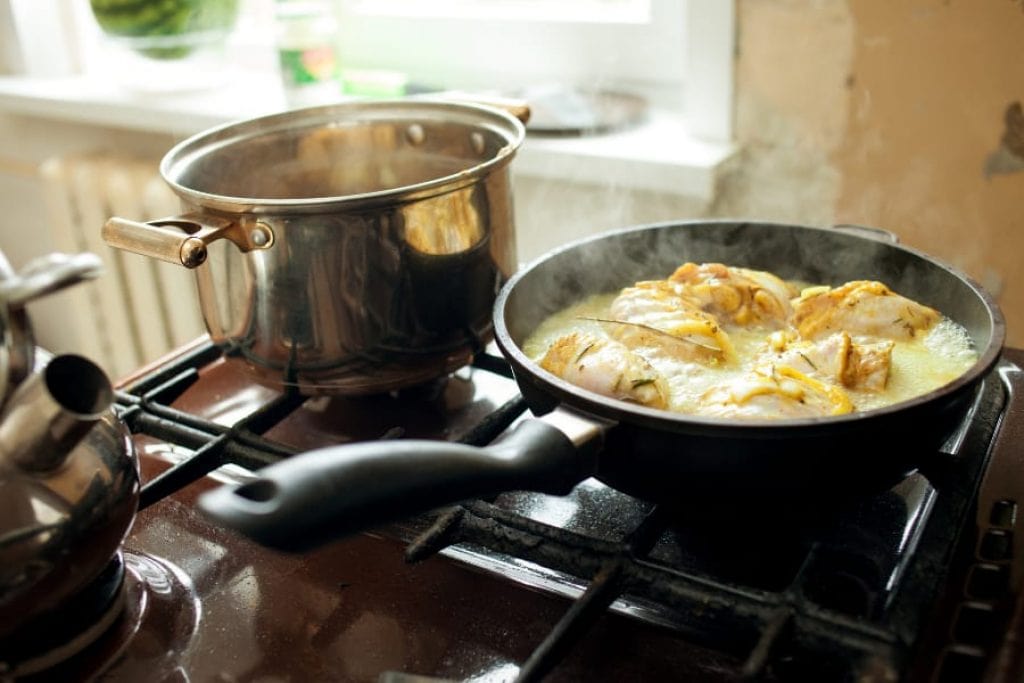
Limitations Of Gas Stove
1. Not the safest cooking device
Cooking on gas stoves involves being close to an open flame, which can be risky if you are not experienced enough. Gas stoves use combustible fuel, so there is also the risk of gas line explosion.
2. The rising cost of LPG cylinders
Fuel prices in India are constantly rising. So using a gas stove daily for a large amount of cooking can prove to be very expensive. Natural gas is also relatively more expensive than other fuels.
3. Not eco-friendly
As the gas stove is the most popular cooking appliance, consumption of LPG and natural gas is rising every day. This heavily impacts the earth’s fossil fuel storage and emits a considerable amount of greenhouse gas like Carbon Monoxide. Gas also produces higher levels of carcinogenic fumes.
4. Not very portable
Traditional gas stoves are heavier and cannot be moved frequently. Compared to hobs, gas stoves do not need civil work in the kitchen. Kitchen hobs that run on LPG are usually fixed permanently and you have to disassemble the fixture for relocation.
5. Less efficient
Gas stoves are less efficient when compared to electric or induction cooktops. While normal gas stoves have 50-60% efficiency, gas stoves with swirl burners add more thermal efficiency than the conventional burner. The Bureau of Indian Standards (BIS) specifies a minimum thermal efficiency of 68% in IS 4246 : 2002.
While switching from gas stoves to electric-powered appliances seems tempting, the chances are that your old gas stove is perfectly equipped to serve your cooking needs. These stoves are durable and can be trusted for their consistency and efficiency.
With modern designs, aesthetically pleasing gas stove models are also available in the market, which can easily give many electronic glass tops a good run for their money. If you weigh in your requirements and choose one accordingly, you will find very few alternatives to be as efficient as a good old gas stove.

